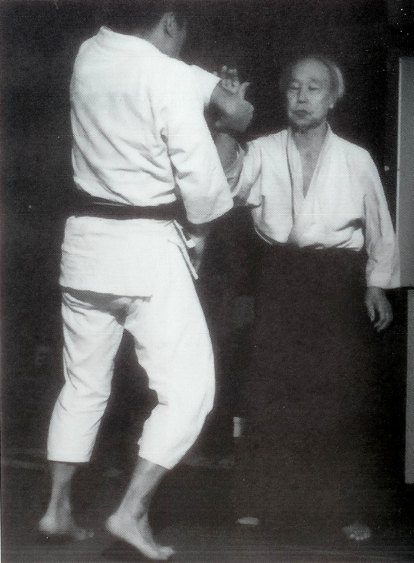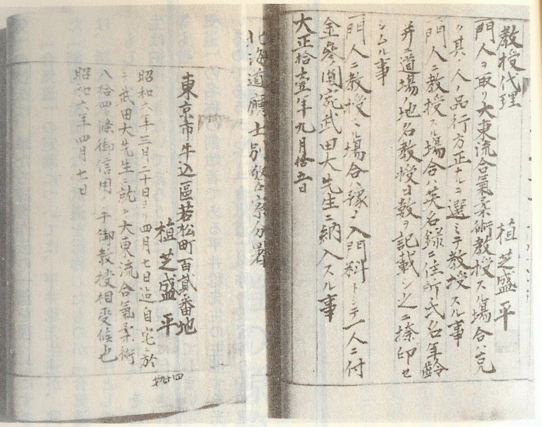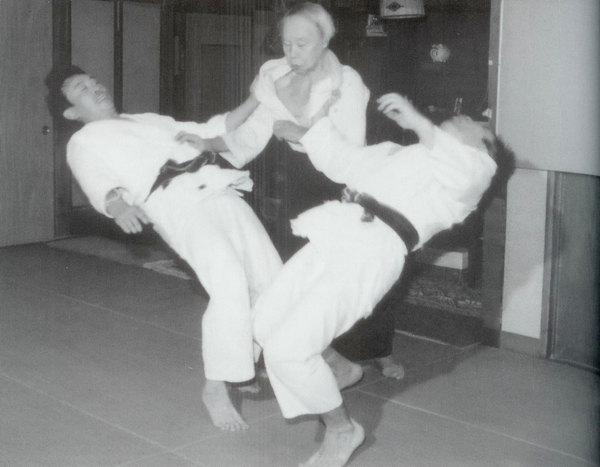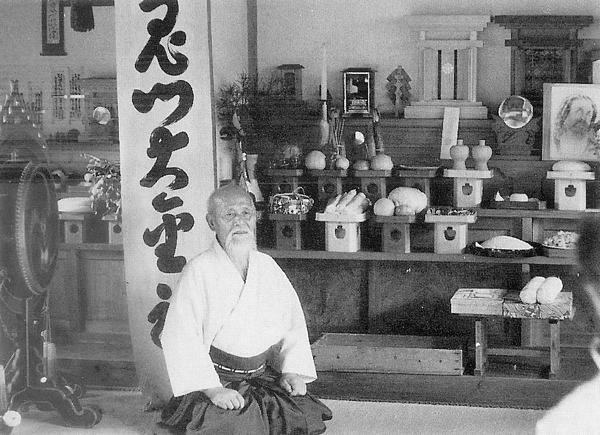
Yukiyoshi Sagawa Sohan demonstration Aiki-nage on Masaru Takahashi Sensei
Masaru Takahashi Sensei on explaining Aiki
Masaru Takahashi (高橋賢), one of the senior surviving students of the famous Daito-ryu instructor Yukiyoshi Sagawa, entered Sagawa Dojo on May 5th of Showa year 47 (1972).

Sokaku Takeda’s Eimeroku, showing Morihei Ueshiba’s Kyoju Dairi certification on the right
Yukiyoshi Sagawa (佐川幸義) was one of the senior students of Sokaku Takeda, Morihei Ueshiba O-Sensei’s instructor in Daito-ryu, and was actually designated as the successor to Takeda at one point in time. He began studying Daito-ryu under Takeda Sokaku after first learning the art from his father, Nenokichi Sagawa (佐川子之吉 1867–1950), who was a student and ardent supporter of Takeda, as well as a holder of a Kyoju Dairi (assistant instructor’s licence) in Daito-ryu – the same license that Morihei Ueshiba himself received from Sokaku Takeda. Yukiyoshi Sagawa received his own Kyoju Dairi certification in 1932.
Takahashi Sensei instructs at the Sagawa-den Daito-ryu Aiki Budo Sagamihara branch dojo (佐川伝大東流合氣武道相模原支部), at the Daito-ryu Sagawa Dojo hombu (大東流佐川道場本部) in Kodaira city, and has published a number of books and articles researching the Japanese martial arts and Daito-ryu.
This article is an excerpt from his book “The Truth of Daito-ryu Aiki” (大東流合気の真実), which was published in Japanese by Fukushodo Co. Ltd.(http://fukushodo.com/) in September 2007.
Another excerpt from this book appears in “Sagawa Yukiyoshi, Masaru Takahashi and Breath Training in Daito-ryu“. (more…)





